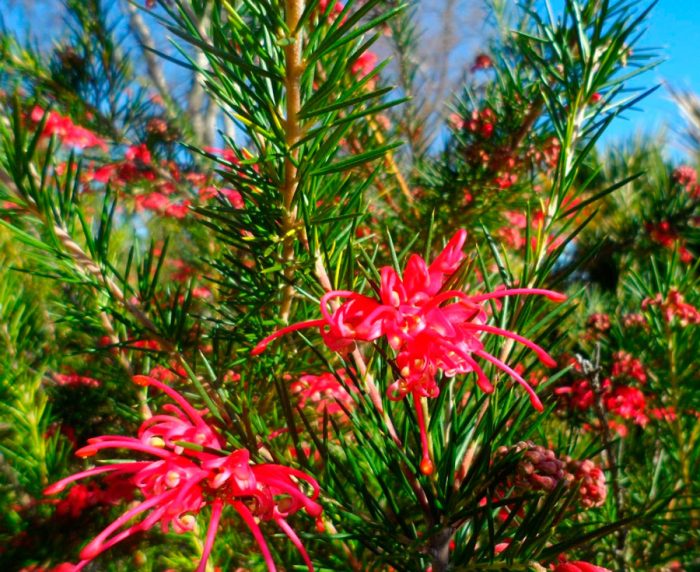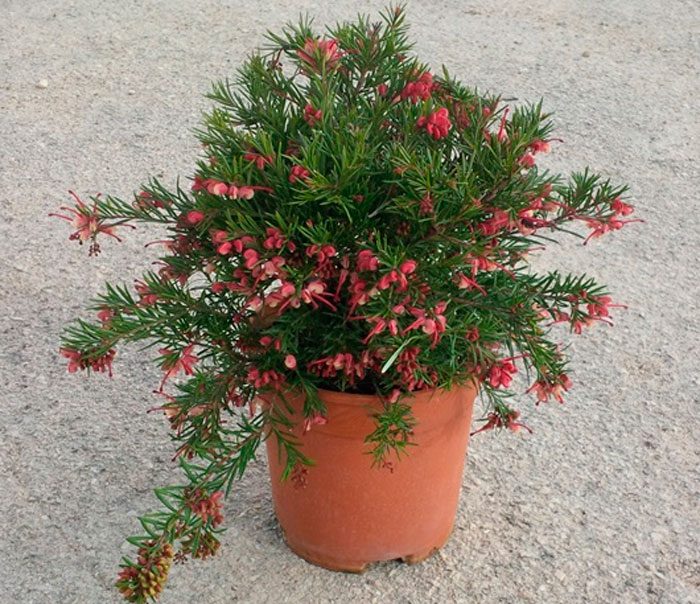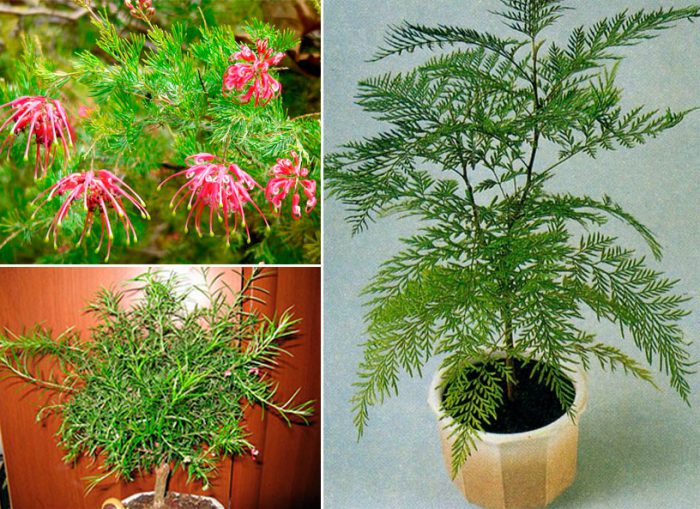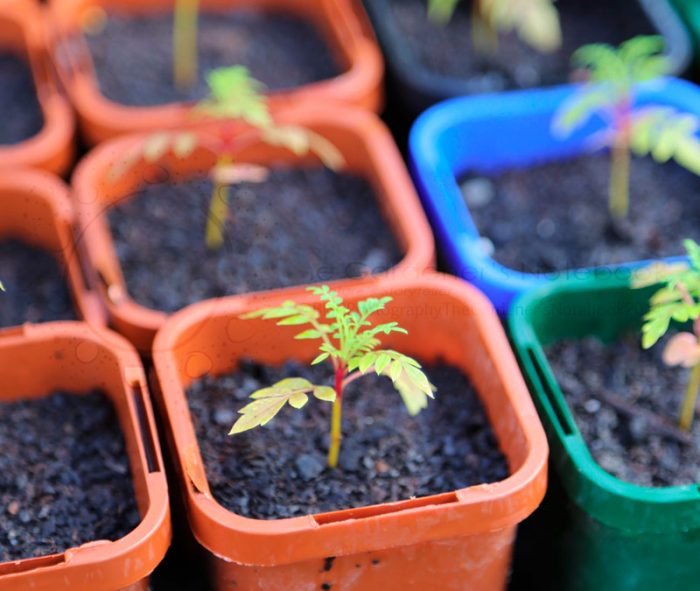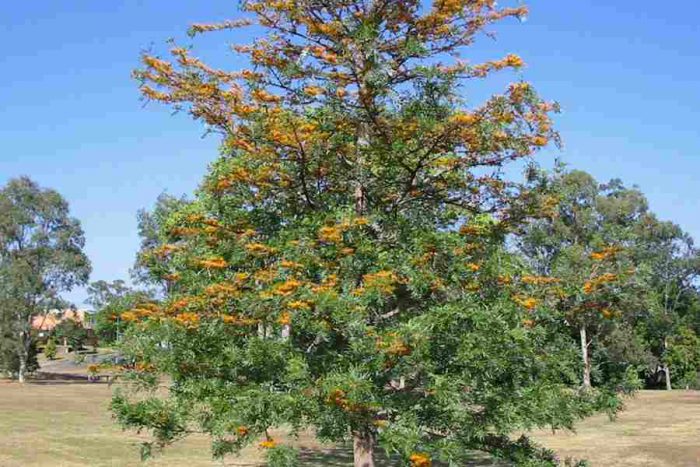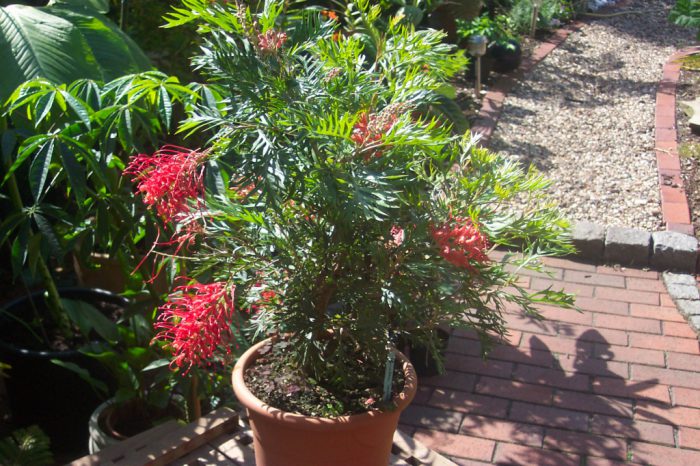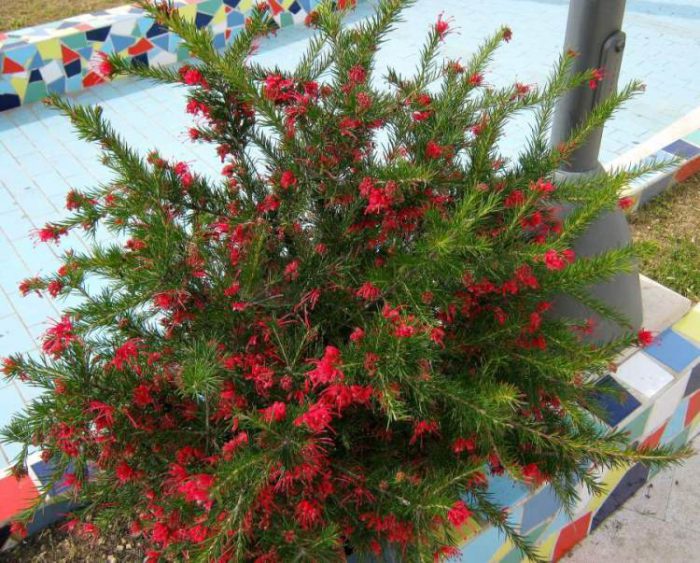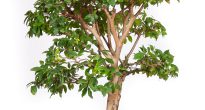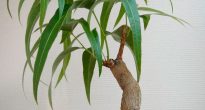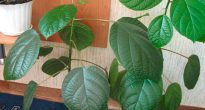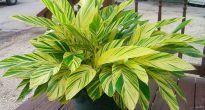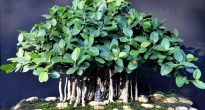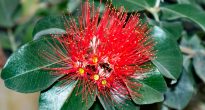Genus of plants grevillea (Grevillea) is quite large and is directly related to the Proteaceae family. It brings together about 370 plant species that can be found in nature in most cases in Australia. Only 5 species of this genus are found in other parts of the world, namely: on the islands of New Guinea, Sulawesi, and New Caledonia.
Plants of this genus are represented by evergreen creeping or erect shrubs, most of which are quite small (about half a meter). There are also quite large trees, the height of which can be more than 30 meters. On the surface of the cylindrical shoots, there is a grayish and rather smooth bark. The alternate leaflets are in most cases short-petiolate. The shape of the foliage can vary significantly from species to species. Tubular flowers can be either sludge or divisible. Despite their small size, they form rather large inflorescences in the form of brushes, since they have very long pistils.
Home care for grevillea
At home, Grevillea is grown as an ornamental deciduous plant. Therefore, the most popular among flower growers is the large grevillea, since it has very spectacular, like openwork leaves. However, it is not so easy to grow it at home. She feels best in greenhouses with a special climate.
Illumination
The plant needs a very bright, but diffused light at any time of the year. Daylight hours for him should last for 10 hours. In the event that it is cloudy outside, as well as in the autumn-winter period, the plant should be illuminated with special phytolamps.
Temperature regime
In the warm season, a moderate temperature is needed from 19 to 24 degrees. In winter, he needs a coolness of 6 to 12 degrees.
How to water
From mid-spring to October, watered abundantly. The potting medium should be slightly moist at all times. With the onset of the winter period, watering is much less frequent and less, but care must be taken to ensure that the soil does not dry out completely.
For irrigation, use exclusively settled, soft water at room temperature.
Humidity
High humidity is required.In this regard, it is recommended to spray the plant very often, and you can also use a household steam generator. When the humidity is too low, yellowing and drying of the foliage begins. And then the leaves begin to die off.
Pruning
This plant is fast growing and large enough. Regular pruning, as well as frequent pinching of the tips of the stems, will help form a compact tree with a spectacular and very neat crown. It will also help to contain the growth of large Grevillea.
Earth mix
The soil suitable for planting should be loose, slightly acidic and rich in nutrients. To create a suitable soil mixture, it is necessary to combine coniferous, leaf and peat soil, as well as river coarse sand in a ratio of 2: 1: 1: 0.5. It is also advised to add a little crushed charcoal or brick chips to the mixture. A good drainage layer is laid at the bottom, which will avoid stagnation of liquid in the soil.
Fertilizer
They begin to feed the plant at the beginning of spring, and end in the middle of the autumn period. Top dressing is carried out 2 times a month, using a complex fertilizer for deciduous indoor plants. In autumn and winter, fertilizers cannot be applied to the soil.
Transplant features
Until the age of three, the transplant is carried out 1 time per year. Adult specimens are transplanted once every 2 or 3 years. If the plant is very large, then it should not be transplanted, but simply once a year the top layer of the substrate (up to the root system) is removed in the pot and replaced with a fresh one. This must be done carefully enough.
Reproduction of grevillea
It can be propagated by semi-lignified cuttings or seeds.
Cuttings are carried out in the month of August. To do this, cut off the upper part of the shoots, which have 2 or 3 internodes. The slices are dipped in a rooting agent, and then planted in a container with moistened sand, and covered with a glass jar or a plastic bag cap. After rooting, they are transplanted into separate, not very large pots.
Seeds are sown in the last winter weeks. To do this, use low wide bowls, which are recommended to be put in mini-greenhouses with bottom heating. Also, backlighting is required for germination.
Diseases and pests
Harmful insects on such a plant can be seen extremely rarely.
This tree can get sick if it is improperly looked after. For example, if there is too low humidity, improper watering, high air temperature, and more.
Types of grevillea with photo
Grevillea large (Grevillea robusta)
This tree in natural conditions can reach a height of 14 meters. Short-petiolate unpaired leaves with 25–35 broad-lanceolate cut segments, ranging in length from 15 to 20 centimeters. The obverse is colored deep green, it is smooth and has a distinct venation of the lobes. The seamy side has slight pubescence. The horizontally arranged axillary inflorescences are composed of orange flowers. In length they reach 12 centimeters, and outwardly they are very similar to the longitudinal halves of the cylinders. This unusual shape of inflorescences is created by pistils directed in one direction, or rather, up.
Grevillea banksii
It is presented in the form of a compact tree (height up to 5 meters) or a bush. Unpaired leaflets reach 10 to 20 centimeters in length and consist of 4–11 entire narrow-lanceolate lobes. The smooth front side of the leaves is colored greenish-gray, and the pubescent back side is silver. Red-scarlet flowers are collected in axillary and apical inflorescences in the shape of a cylinder. In length, they reach from 5 to 10 centimeters. A distinctive feature of long pistils is their tips bent by a rather large hook. Thanks to them, the inflorescence looks like a curly brush.
Grevillea rosemary (Grevillea rosmarinifolia)
Presented as a tall (1.5-1.8 meters) bush. Sessile green leaves have a narrow-lanceolate shape, almost acicular. The branches are literally covered with them. Bicolor flowers are white-red and are collected in apical few-flowered inflorescences in the shape of a brush.
Grevillea candelabroides
This very large and tall shrub can be up to 3 meters high and wide. Cirrus leaves have narrow, almost filiform lobes. White flowers are collected in vertically arranged, dense, apical inflorescences that are cylindrical and reach about 25 centimeters in length.


Watch this video on YouTube

